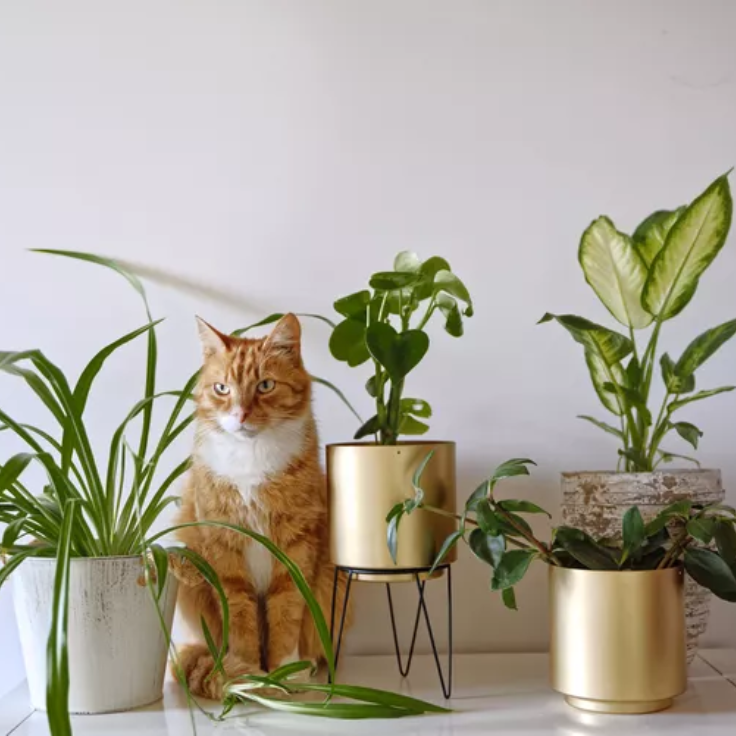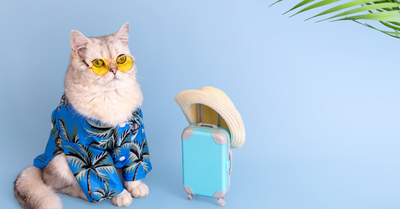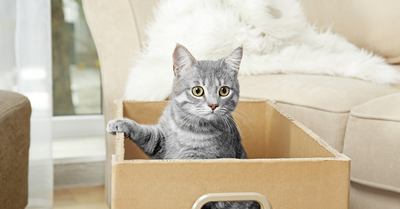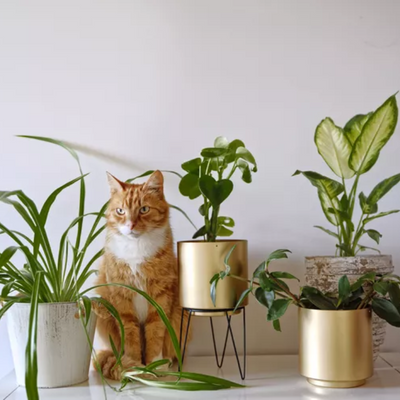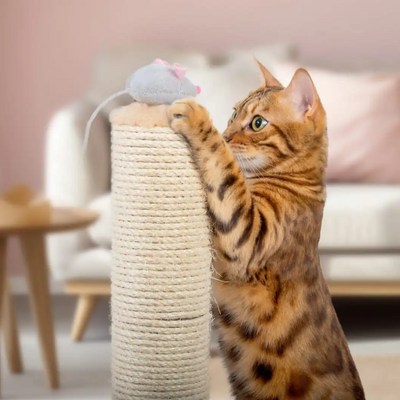Cats bring joy, companionship, and a touch of mischief to our homes. However, their curious nature means they often nibble on plants, making it crucial to choose pet-safe options. Many common houseplants are toxic to cats, but that doesn’t mean you have to give up on greenery. In this guide, we’ll explore toxic plants to avoid, suggest beautiful and safe alternatives, and share tips on how to incorporate them into your cat-friendly home.
Toxic Plants to Avoid
Before diving into safe plant options, let’s take a look at some common houseplants that are dangerous for cats:
-
Lilies – Highly toxic and can cause kidney failure.
-
Pothos (Devil’s Ivy) – Can lead to oral irritation and vomiting.
-
Sago Palm – Ingesting even a small amount can cause severe liver damage.
-
Aloe Vera – While great for human skin, it’s harmful to cats if ingested.
-
Snake Plant – Can cause nausea, vomiting, and diarrhea.
If you have any of these plants, consider relocating them to a space completely out of reach of your cat or replacing them with pet-safe alternatives.

Safe and Stylish Plant Alternatives
If you want a lush, green home without compromising your cat’s safety, consider these beautiful, non-toxic options:
1. Cat Grass (Dactylis glomerata)
-
Encourages healthy digestion and satisfies your cat’s urge to chew.
-
Easy to grow indoors and adds a fresh touch to your space.
-
Requires regular watering and bright, indirect light.
2. Spider Plant (Chlorophytum comosum)
-
Non-toxic, air-purifying, and resilient.
-
Cats are often attracted to its long, playful leaves.
-
Thrives in indirect light with occasional watering.
3. Areca Palm (Dypsis lutescens)
-
Safe for cats and adds a tropical vibe to your home.
-
Prefers bright, indirect light and moderate watering.
-
Consider the Artificial Areca Palm Plant for an effortless alternative.
4. Boston Fern (Nephrolepis exaltata)
-
Aesthetic, feathery fronds that are completely safe for cats.
-
Requires high humidity and indirect sunlight.
-
Avoid letting it dry out completely.
5. Calathea (Calathea spp.)
-
Known for its striking foliage and pet-safe qualities.
-
Thrives in low-light conditions and high humidity.
-
Keep soil slightly moist but avoid overwatering.

Decorating with Cat-Safe Plants
To integrate these plants into your home while keeping them safe from curious paws, follow these tips:
-
Choose Low-Maintenance Options: Opt for easy-care plants like the Artificial Olive Tree or Artificial Monstera Plant for a hassle-free way to add greenery without worrying about watering or toxicity.
-
Place Plants Strategically: Use high shelves, plant stands, or racks to keep plants out of reach. The Stainless Steel Plant Rack or Single Layer Wooden Rack are great options for elevating your greenery.
-
Use Cat-Safe Planters: Consider decorative planters that add to your home’s aesthetic while keeping your plants secure. Try the Low Round Steel Planter Stand or Imitation Round Plant Pot.
-
Incorporate Artificial Greenery: If your cat is extra mischievous, artificial plants like the Artificial Hanging Plant in Black Pot or Artificial Orchid in Pot are excellent choices for maintaining style without risk.
Bonus Tip: Natural Fragrance Alternatives
Instead of using synthetic air fresheners that may contain harmful chemicals, try these cat-safe options:
-
Cat-safe essential oils: Use diluted lavender or chamomile essential oils in a diffuser (placed out of your cat’s reach).
-
Dried herbs: Hang small bundles of rosemary or mint around your home for a natural, fresh scent.
-
Baking soda & lemon peels: Leave a small bowl of baking soda mixed with dried lemon peels in corners to absorb odors naturally.
FAQ: Common Questions About Cat-Safe Plants
1. How can I keep my cat from chewing on my plants?
Try placing citrus peels around the plant base, using a plant stand to elevate greenery, or providing alternative chew-friendly options like cat grass.
2. Are artificial plants safe for my cat?
Yes! High-quality artificial plants like the Artificial Skybird Plant offer a realistic look without any toxic risks.
3. Can I use plant fertilizers around my cat?
It’s best to opt for organic, pet-safe fertilizers or use indoor potting soil without added chemicals.


